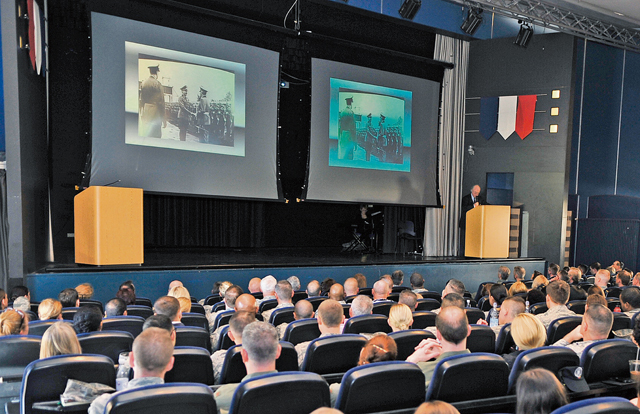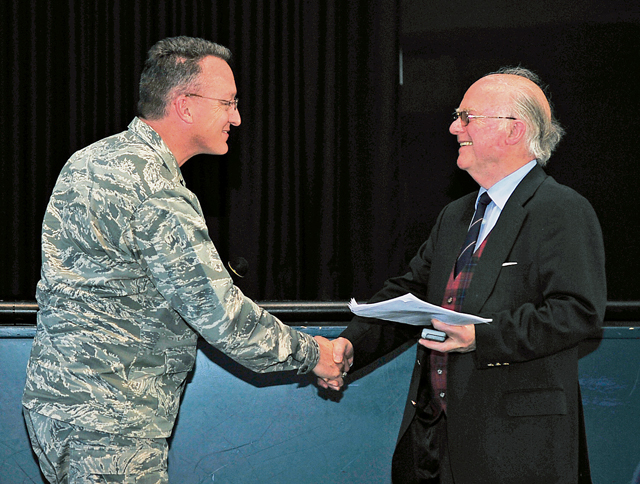
Operation Valkyrie was a plot to assassinate Adolf Hitler and take back Germany from the Nazis.
On July 20, 1944, a group of the German military, or Wehrmacht, carried out the plot to assassinate the German dictator, arrest his followers and end the Nazi regime. On this particular day, Col. Claus von Stauffenberg, a German army officer and aristocrat, set off a bomb in Hitler’s headquarters in East Prussia.
Because Stauffenberg could not correctly position the briefcase containing the bomb, the plan failed. That evening, Stauffenberg and some of his closest assistants were shot while others committed suicide so they would not reveal the identities of their co-conspirators.
On Aug. 7 and 8, 1944, Lt. Gen. Paul von Hase, military commander of Berlin at the time and a main conspirator, stood trial along with seven other members. The members were sentenced to death by hanging. Both the trial and hanging were videotaped without the defendants’ knowledge.
“My father was not allowed to write a farewell letter to the family,” von Hase said. “(My father’s execution) and the other defendants’ were filmed. This way the Führer (Hitler) was able to watch and enjoy the end of his archenemies in the company of his minions. The ashes of the victims were scattered in the wind so they did not find a grave.”
Friedrich’s Mother, Margarethe, his 20-year-old sister Maria, and his 19-year- old brother, Alexander, were arrested and kept in solitary confinement under strict conditions.
“(They were) interrogated constantly to reveal possible details about the plot, but my father had not told them anything in order to protect them,” von Hase said. “After a few weeks, my relatives were released. My brother’s health had always been frail, but he was still drafted afterward as a soldier.”
Friedrich’s brother had to sign a contract stating he would face the death penalty if he spoke of the torture and interrogations while detained.
Once released, the family feared they would be killed out of rage, being known as the children of the “traitor.” Those uncertainties were soon diminished.
“We hid in the home of a foreign worker from Belgium,” von Hase said. “It is more than understandable that we were grateful when the American troops came and relieved us from our fears.
“I was seven at the time, but I still remember very vividly when heavy American tanks came,” he continued. “I was sitting on a stone wall watching them curiously. Gun barrels were pointing left and right, but they did not frighten me. The American soldiers were friendly and seemed to be very relaxed compared to our German military. They spoiled us children with sweets of many kinds. That, having been hungry for so long, was well received.”
Friedrich’s sister began studying foreign languages at the University of Heidelberg and eventually applied for scholarships for schools in the U.S. at the age of 24. While in the U.S., Maria met an American theology student with German roots. The couple married and they still live in Richmond, Va., today.
After the ceremony, many attendees stayed to speak with von Hase. Capt. Gary Davidson, 86th Airlift Wing chaplain, said he was very inspired by von Hase’s speech about his father.
“Gen. von Hase sacrificed his life to defeat Hitler and the Nazi regime,” Davidson said. “Although the assassination attempt did not succeed, this man performed a selfless and incredible act of heroism.”
In von Hase’s closing statement, he reminded attendees of the importance of telling stories about the past and keeping memories and history alive — good or bad.
“By telling people about the happenings during these dark times, the memories will be passed on to the next generation and we honor those who sacrificed their lives,” he said.



